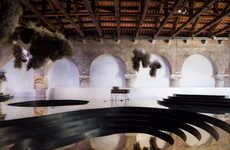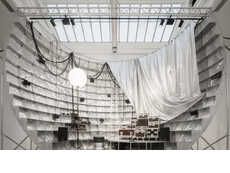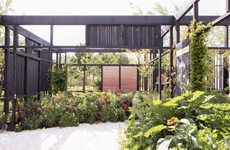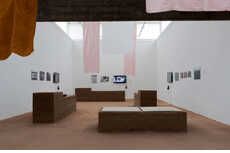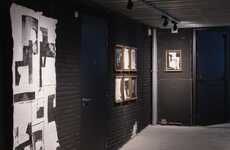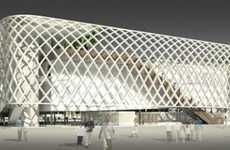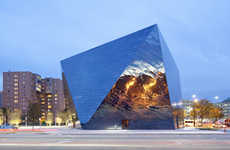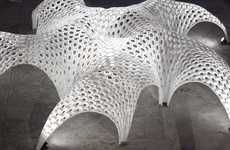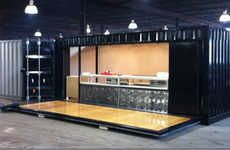
The Dutch Pavilion at the Venice Architecture Biennale Explores Space
Alexandra Serrano — August 30, 2012 — Art & Design
References: labiennale.org & dezeen
The Dutch Pavilion at the Venice Architecture Biennale encourages exploration of spacial utility.
Complete with gliding curtains for a fun-house like effect, this installation is an intricate pavilion of expanse. According to Dezeen, "curtains glide along tracks on the ceiling to constantly reconfigure the space." The curtains used vary in texture, color and durability and opacity. Each spectator of this installation will gain insight into the potential of a large space when mobility of barriers is incorporated into its DNA.
The project's raison d'etre is to highlight the infinite possible uses of neglected space. Transforming existing empty buildings with an installation of this magnitude and versatility increases the spacial utility tenfold. This design was conceived by Dutch designer Petra Blaisse and curated by Ole Bouman, director of the Netherlands Architecture Institute.
Complete with gliding curtains for a fun-house like effect, this installation is an intricate pavilion of expanse. According to Dezeen, "curtains glide along tracks on the ceiling to constantly reconfigure the space." The curtains used vary in texture, color and durability and opacity. Each spectator of this installation will gain insight into the potential of a large space when mobility of barriers is incorporated into its DNA.
The project's raison d'etre is to highlight the infinite possible uses of neglected space. Transforming existing empty buildings with an installation of this magnitude and versatility increases the spacial utility tenfold. This design was conceived by Dutch designer Petra Blaisse and curated by Ole Bouman, director of the Netherlands Architecture Institute.
Trend Themes
1. Spacial Utility - The Dutch Pavilion at the Venice Architecture Biennale explores the potential of a large space by incorporating the mobility of barriers.
2. Infinite Uses of Neglected Space - The installation in the Dutch Pavilion highlights the untapped potential of transforming existing empty buildings into versatile, dynamic spaces.
3. Mobility of Barriers - The gliding curtains in the Dutch Pavilion constantly reconfigure the space, showcasing how incorporating movable barriers can redefine a room's functionality.
Industry Implications
1. Architecture - Architects and designers can explore disruptive innovation opportunities by reimagining the spacial utility of buildings through the incorporation of dynamic barriers.
2. Interior Design - The installation in the Dutch Pavilion inspires interior designers to harness the potential of neglected spaces by utilizing movable barriers and versatile design concepts.
3. Urban Rejuvenation - Urban developers and planners can leverage the concept of transforming empty buildings with versatile installations to revitalize neglected areas and maximize spacial utility.
4.3
Score
Popularity
Activity
Freshness


